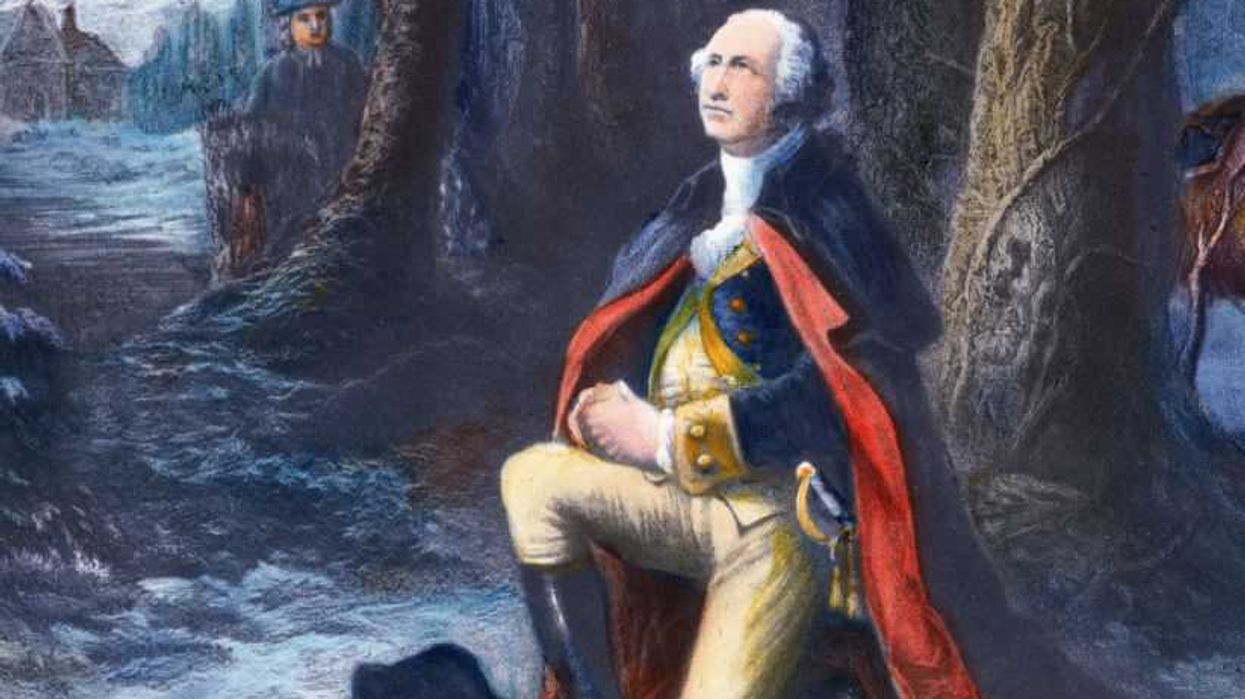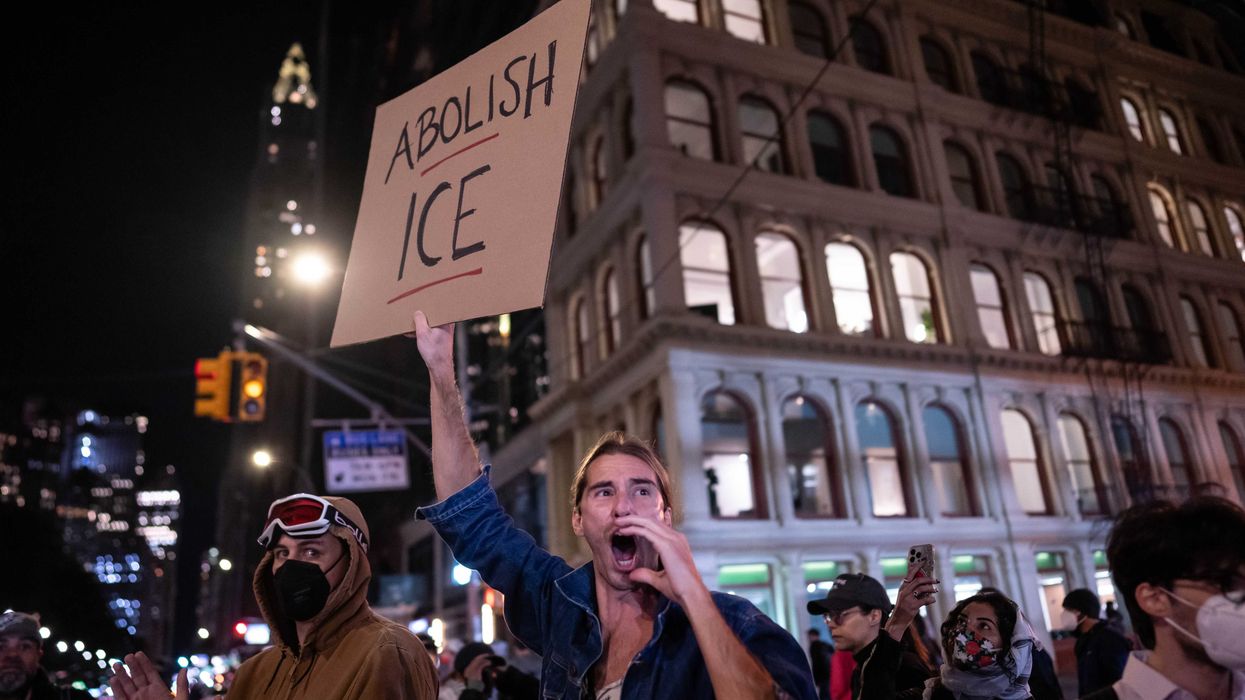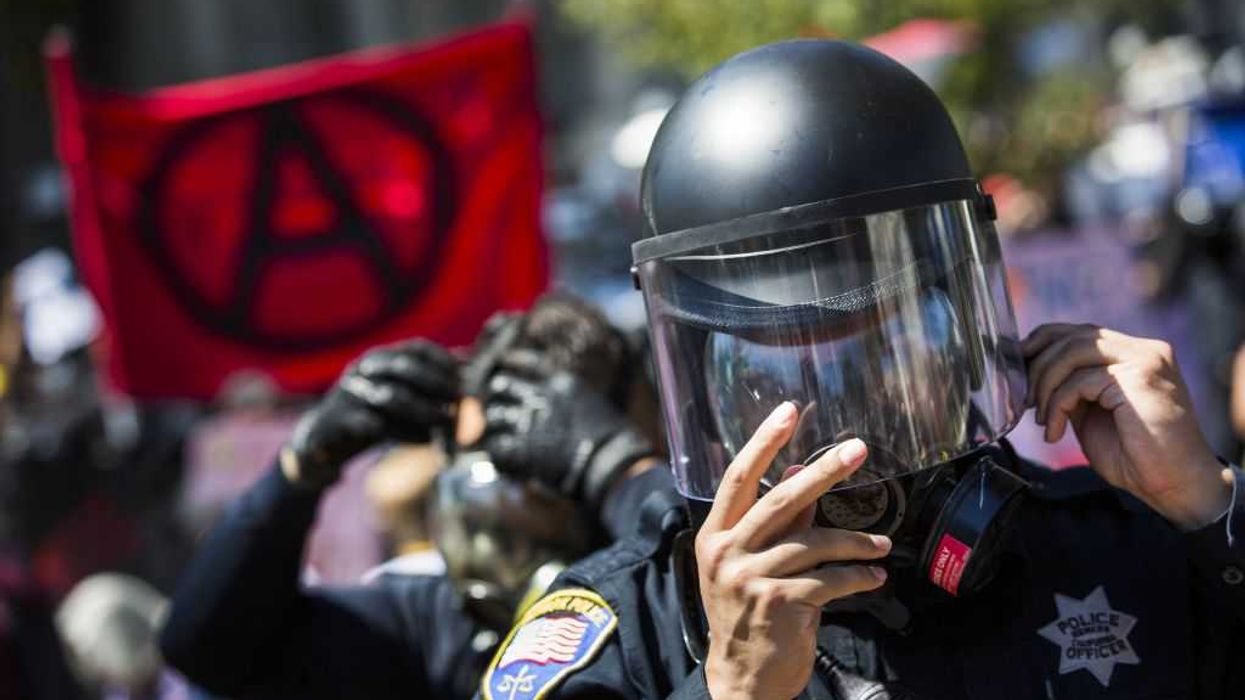On radio this morning, Glenn shared the story of the 'Tank Man' – the man at the center of the now iconic picture that emerged from the Tiananmen Square protests. The photo of the lone man standing in the middle of the street as tanks barreled toward him quickly became the inspiration for freedom movements everywhere. As Americans continue to face threats to their freedom, it is important to remember the significance of such displays of courage:

June 5th. A morning haze lifted from Tiananmen Square in Beijing. Last night the revolution died in this spot. Thousands of unarmed students called for a free press, human rights, and government transparency. They are unarmed. Now a division of type-59 tanks rumbled down the Avenue the Eternal Peace patrolling Tiananmen Square. The paper-mâché Statue of Liberty that students, unarmed, built in the middle of the square – crushed and moved from the street. Men in uniform and guns hunker down, scrubbing blood from the pavement, removing any signs of yesterday's ‘incident.’
Now thousands of people venture down the sidewalk to see the aftermath. They stare vacantly from the sidewalk, careful not to make eye contact with any official. Among those people you find our hero. Not a physical specimen, he blends into everybody else on the sidewalk. He blended until he stepped forward, alone out into the streets in front of the rumbling tanks. He humbly stands in front of the lead tank. The tank didn't stop. The man didn't move. He flung his right arm, “Turn back because I am not leaving.” The Army's orders from two days earlier still stood: clear the square at all costs. Evidence of the cost still splattered all over the square.
He was unlikely aware that CNN and at least four still-photographers were discretely filming from the hotel balconies. He didn't know that the world was watching. A single skinny man squaring off an Army a nation a system of oppression, one man unarmed against four tanks. And the tanks kept rolling. 15 feet, 10 feet, five feet from the man. And then the tank stopped, and the line of tanks behind it are forced to stop as well.
It maneuvered to go around the man, and the man stepped sideways to block it. But he never stepped backward. The tanks stopped and redirected itself forward. It was coming toward the man again. Five feet, four feet, three feet, and two feet – the tanks stops again and at this time turns off its engine. Our hero climbs up the tank. He speaks to the gunner on the top and bangs on the hatch. The driver comes out, and they spoke for a moment. The man climbed down the tank, and the tanks re-started their engines. It appeared as if he was going to return to the sidewalk, but no, he pivoted and stepped right back in front of the tank. One man alone would not yield.
Finally, a small group from the sidewalk walked out and grabbed the man and walked him to the other side of the street where he disappeared. To this day nobody knows his name. Press, governments, and human rights agencies have all tried and failed to find who the world just calls the ‘Tank Man,’ but his image covered the front page of newspapers and magazines internationally, all over the globe by the next week.
Later that fall, as Germans and Russians took hammers to the Berlin wall, they talked about the ‘Tank Man.’ People all over the world recognized the image of ‘Tank Man’ – all over the world, except for China. Google allows China to sensor the picture of the ‘Tank Man,’ and the ‘Tank Man’ himself has all but disappeared. Nobody knows his name, nobody knows who he is, and nobody knows if he's alive or dead. But if stepping off the sidewalk that June 5th morning did anything, it assured his immortality.
Courage. Nobody ever changed the world just by stepping off the sidewalk except for the ‘Tank Man.’ Unarmed. Peaceful.
“So much is happening in today's world, and so many people are ratcheting things up, but I think the ‘Tank Man’ teaches us the lesson that we should learn,” Glenn said. “You know, I get a lot of mail from people that say, ‘Glenn, we've got to take back our rights.’ Do we? The answer is yes, we do, but it's all in how you do it.”
“The entire world stood with the ‘Tank Man,’ only the oppressors stood against him. He may not have won his freedom, but he inspired the entire world,” he concluded. “We really are just one little piece of a puzzle. We can make this about us and our rights, or we can make this about the right of all mankind to be free.”

 Harold M. Lambert / Contributor | Getty Images
Harold M. Lambert / Contributor | Getty Images
 Adam Gray / Stringer | Getty Images
Adam Gray / Stringer | Getty Images Anadolu / Contributor | Getty Images
Anadolu / Contributor | Getty Images Brandon Bell / Staff | Getty Images
Brandon Bell / Staff | Getty Images